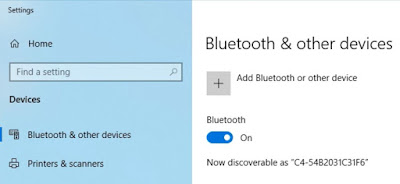How to Implement a Zero Touch Conferencing Experience
The Zero Touch Conferencing Space
• How is social distancing going to be implemented?
• How will I provide a healthy and safe working environment?
• How do I project confidence that my workspace is safe and convince employees to come
back?
• Should I build out larger spaces allowing for social distancing?
• Should I scale back the open office and repurpose huddle rooms and build out new
enclosed offices?
• How do I provide a minimal touch environment to limit the vectors of infection if it is
from Covid or something else?
These questions are relevant to just about every working space environment. So, what can we implement today to facilitate a safer conferencing space?
Scheduling meetings are generally done from a personal device, albeit a mobile phone, or laptop. Because these are personal devices, we feel more comfortable with touching our personal devices than touching a shared device. We should still wipe down our screens and keyboards as a best practice. Below are some screen captures of scheduling a Teams call from my Apple IOS mobile phone using Outlook and scheduling a Zoom meeting from the Android based Zoom client running on my Samsung Galaxy.
 |
| Outlook mobile (IOS) |
 |
| Zoom Mobile Client (Android) |
Joining meetings from a shared conferencing touch controller is a bit trickier. One touch join has certainly taken the complexity out of trying to figure out dial strings and passcodes but it also means we need to touch a shared device that is typically not sanitized after each use. There are many different ways technology can address the zero touch conference space. The Zoom Room platform integrates directly with Amazon Alexa for Business using voice commands to start and join meetings with limitations as described here: https://support.zoom.us/hc/en-us/articles/360000164106-Configure-Alexa-for-Zoom-Rooms and Microsoft will be introducing Cortana Voice controls on the Microsoft Teams Room system soon.
If your organization is leveraging open SIP platforms and standards based video devices, there are several that support Amazon Alexa. While these solutions are not native Teams or Zoom room experiences to their credit they do provide interoperability with these platforms.
Looking at roadmap, occupancy based automation will be available for the Microsoft Teams Room systems leveraging Crestron control processors. Through a set of API’s, workflows can be created based on occupancy, time before a meeting starts or other events to trigger room warm up including: closing of blinds, dimming of the lights and warming up the projector and then the inverse in cooling down the meeting space and peripherals to maintain an eco-friendly carbon footprint.
Microsoft Teams also leverages the proximity join feature enabling a Teams user on a laptop or personal mobile device to choose to start a meeting from a MTR nearby or from a room list in the Exchange GAL. In fact the MTR can be configured to automatically answer. This is a great BYOD and Bring your own Calendar (BYOC) solution when using Microsoft Teams without having to touch the controller in the room.
Zoom provides the ability to automatically start and stop meetings based on the Outlook/Google calendar but these are very static options but nevertheless a good precursor to fully automate the join and end meeting experience.
The images below show the proximity join feature leveraging the Teams client on Windows 10.
 |
| Joining Teams Meeting using Proximity Join |
 |
| Connecting Progress |
 |
| Crestron TSW-1060 Touch Panel Interface |
The next set of images show the mobile proximity join feature from a Samsung Galaxy.
 |
| Connected |
 |
| MTR Video Feed |
After addressing scheduling and join experiences comes the content experience. After all content is king! Zoom leverages a content sharing key with the Zoom client, web browser or Mobile device to share content. Zoom also has an ultrasonic beaconing feature that automatically connects the PC to a content sharing session with the Zoom room platform without ever having to touch a cable in the room.
Microsoft Teams provides the ability to use the proximity join feature from the PC and Mobile clients as content share sources. Additionally, Microsoft supports guest join using a WebRTC like experience for sharing content via a web browser.
Crestron's AirMedia and other content presentation systems provide the ability to wirelessly share content both locally and to the far side using Miracast and Apple Airplay protocols. The following image show the AirMedia connected to the HDMI output back through the Mercury MX in Flex mode. The image below shows my laptop using Miracast to present content to the MTR front of room display.
In summary, we are getting closer and closer to the zero touch conferencing experience leveraging speech recognition, automation and different methods of wirelessly sharing content in our meetings. Of course there are many other aspects to consider in the 'No touch' conference experience such as the door and security that will be addressed in later blog articles. As for now I hope you enjoyed my perspective.





Comments
Post a Comment